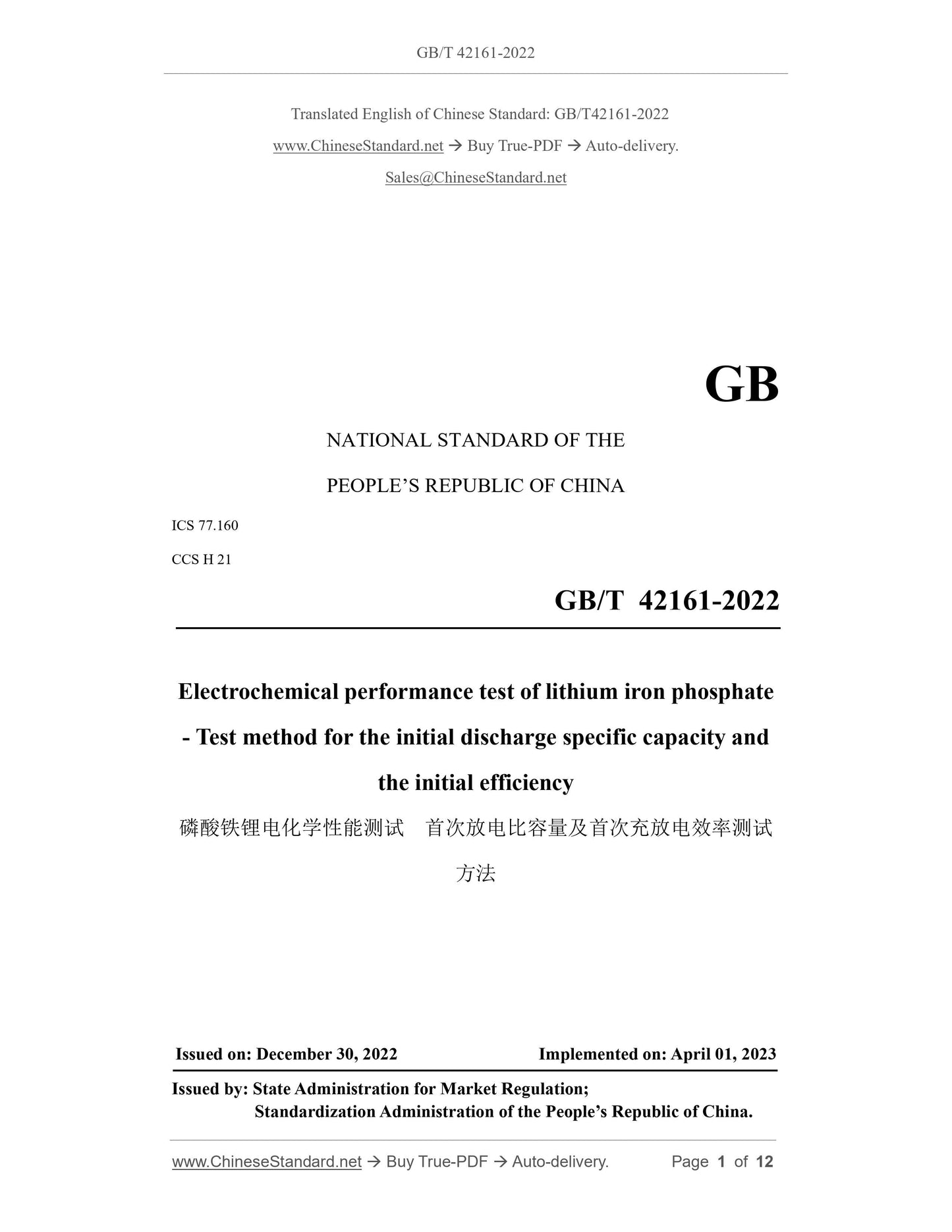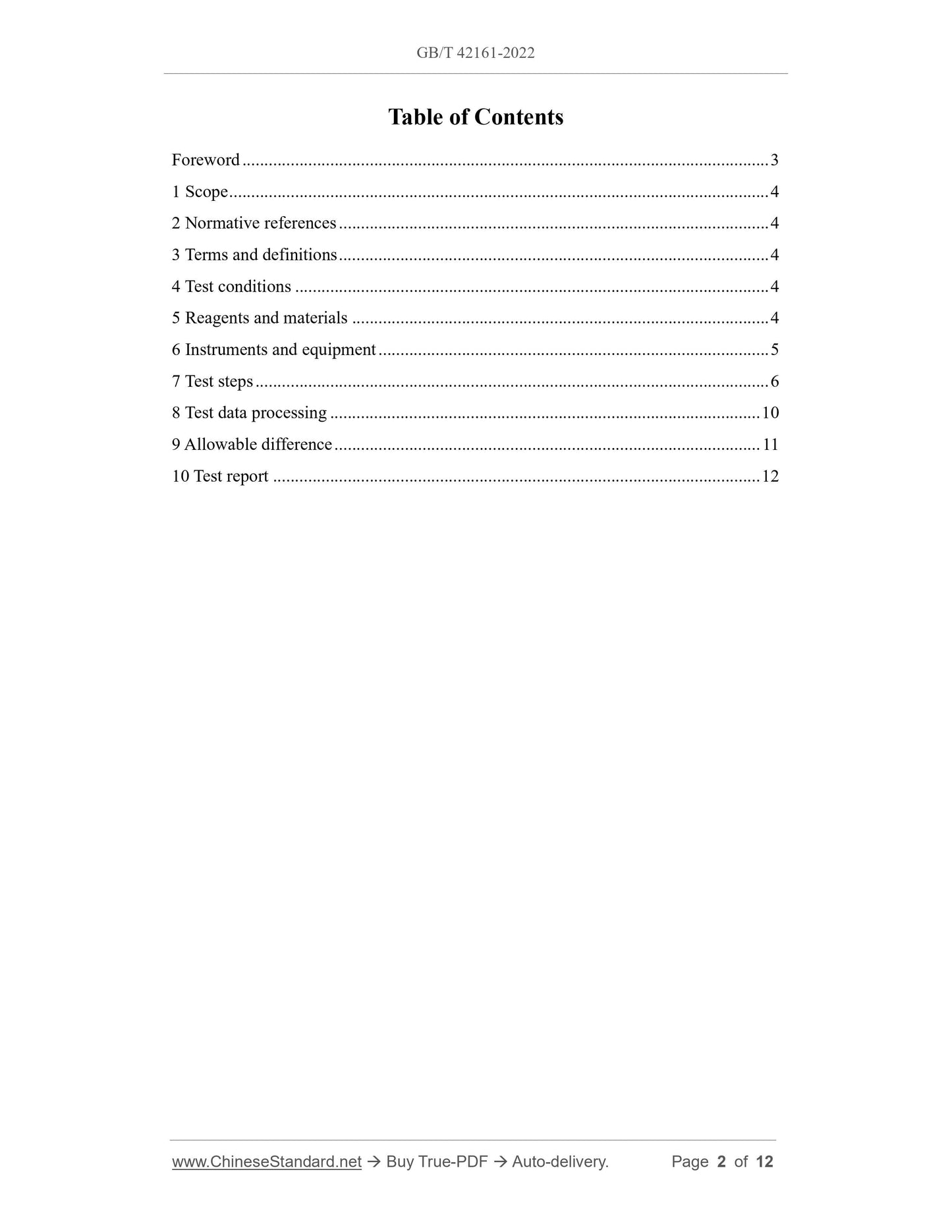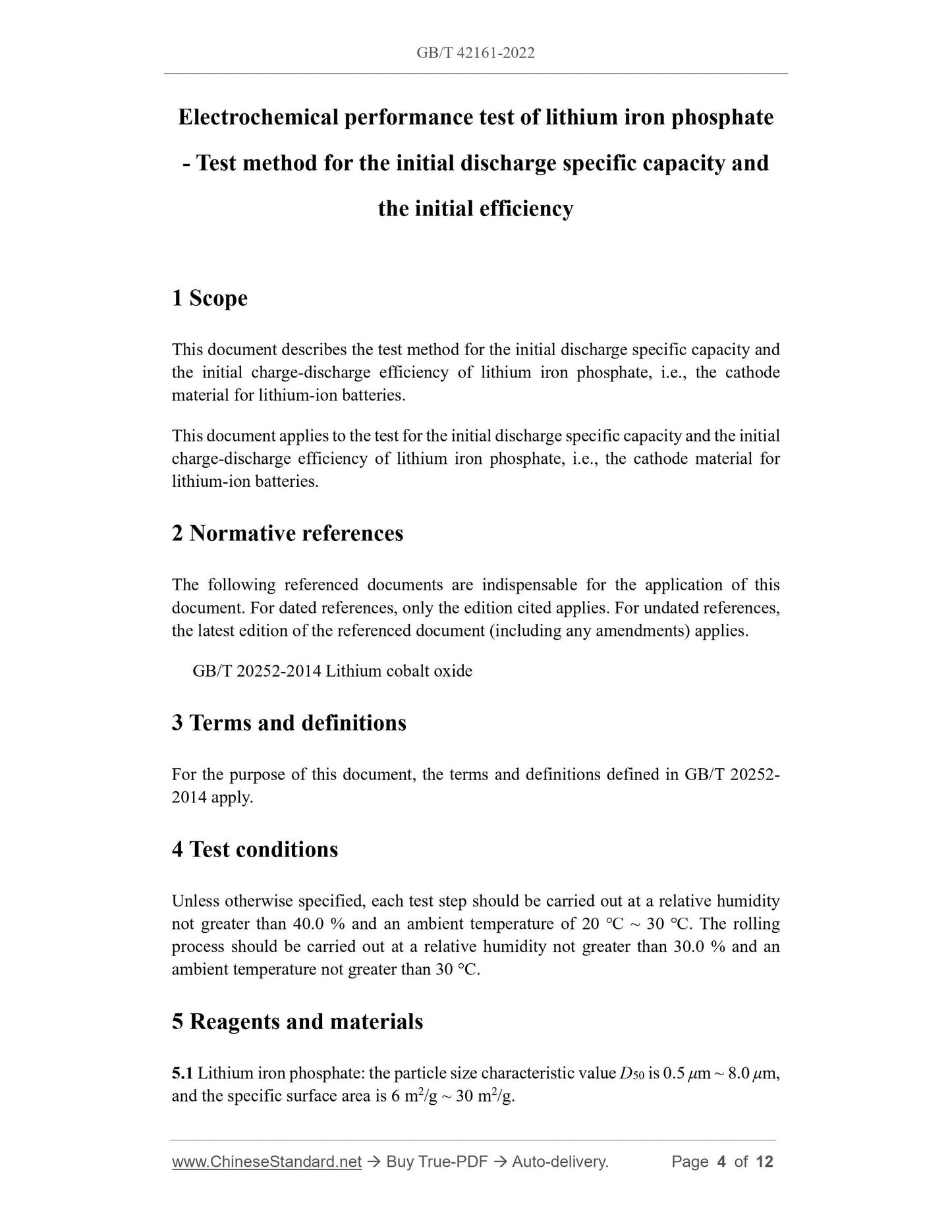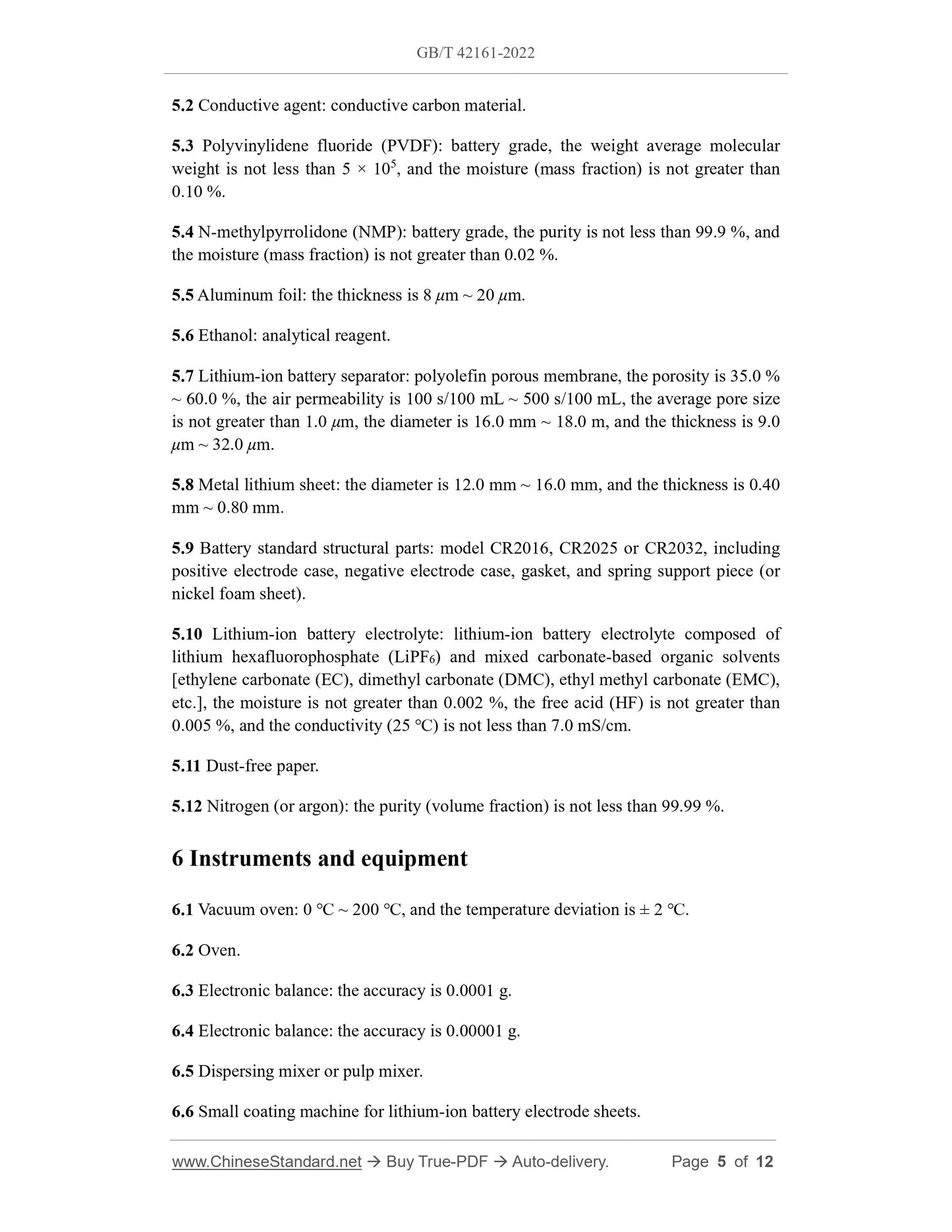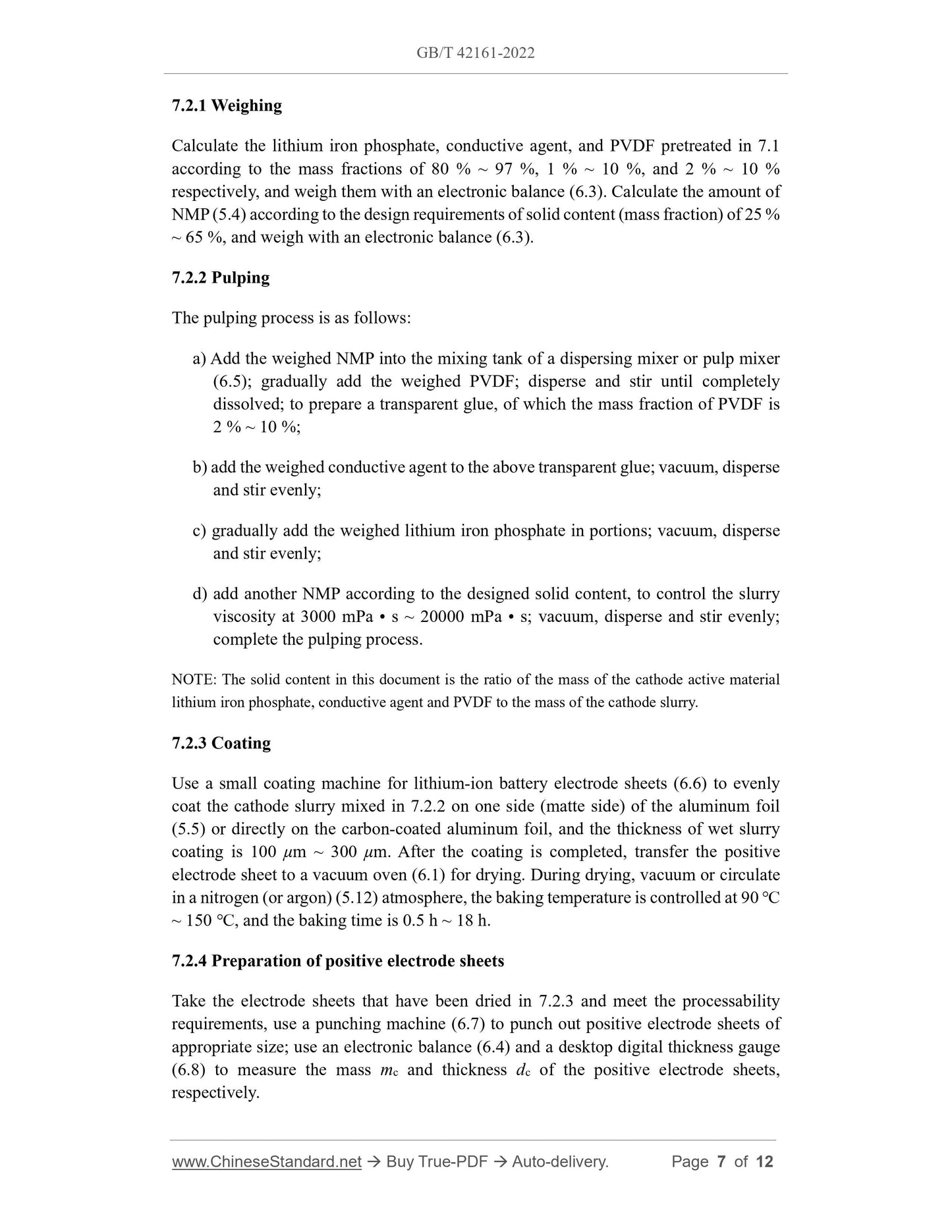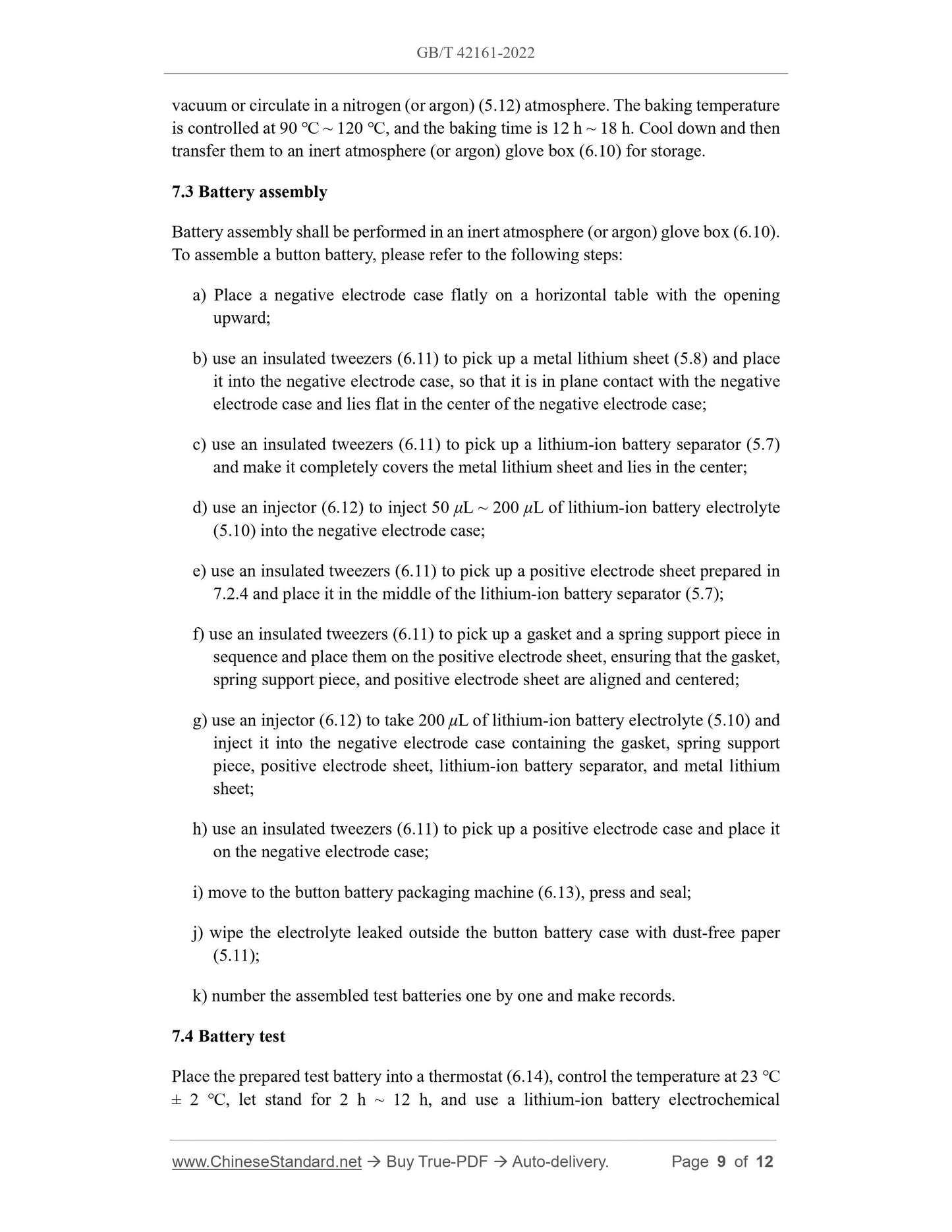1
/
of
6
www.ChineseStandard.us -- Field Test Asia Pte. Ltd.
GB/T 42161-2022 English PDF (GB/T42161-2022)
GB/T 42161-2022 English PDF (GB/T42161-2022)
Regular price
$95.00
Regular price
Sale price
$95.00
Unit price
/
per
Shipping calculated at checkout.
Couldn't load pickup availability
GB/T 42161-2022: Electrochemical performance test of lithium iron phosphate - Test method for the initial discharge specific capacity and the initial efficiency
Delivery: 9 seconds. Download (and Email) true-PDF + Invoice.Get Quotation: Click GB/T 42161-2022 (Self-service in 1-minute)
Newer / historical versions: GB/T 42161-2022
Preview True-PDF
Scope
This document describes the test method for the initial discharge specific capacity andthe initial charge-discharge efficiency of lithium iron phosphate, i.e., the cathode
material for lithium-ion batteries.
This document applies to the test for the initial discharge specific capacity and the initial
charge-discharge efficiency of lithium iron phosphate, i.e., the cathode material for
lithium-ion batteries.
Basic Data
| Standard ID | GB/T 42161-2022 (GB/T42161-2022) |
| Description (Translated English) | Electrochemical performance test of lithium iron phosphate - Test method for the initial discharge specific capacity and the initial efficiency |
| Sector / Industry | National Standard (Recommended) |
| Classification of Chinese Standard | H21 |
| Classification of International Standard | 77.160 |
| Word Count Estimation | 10,195 |
| Date of Issue | 2022-12-30 |
| Date of Implementation | 2023-04-01 |
| Issuing agency(ies) | State Administration for Market Regulation, China National Standardization Administration |
Share
